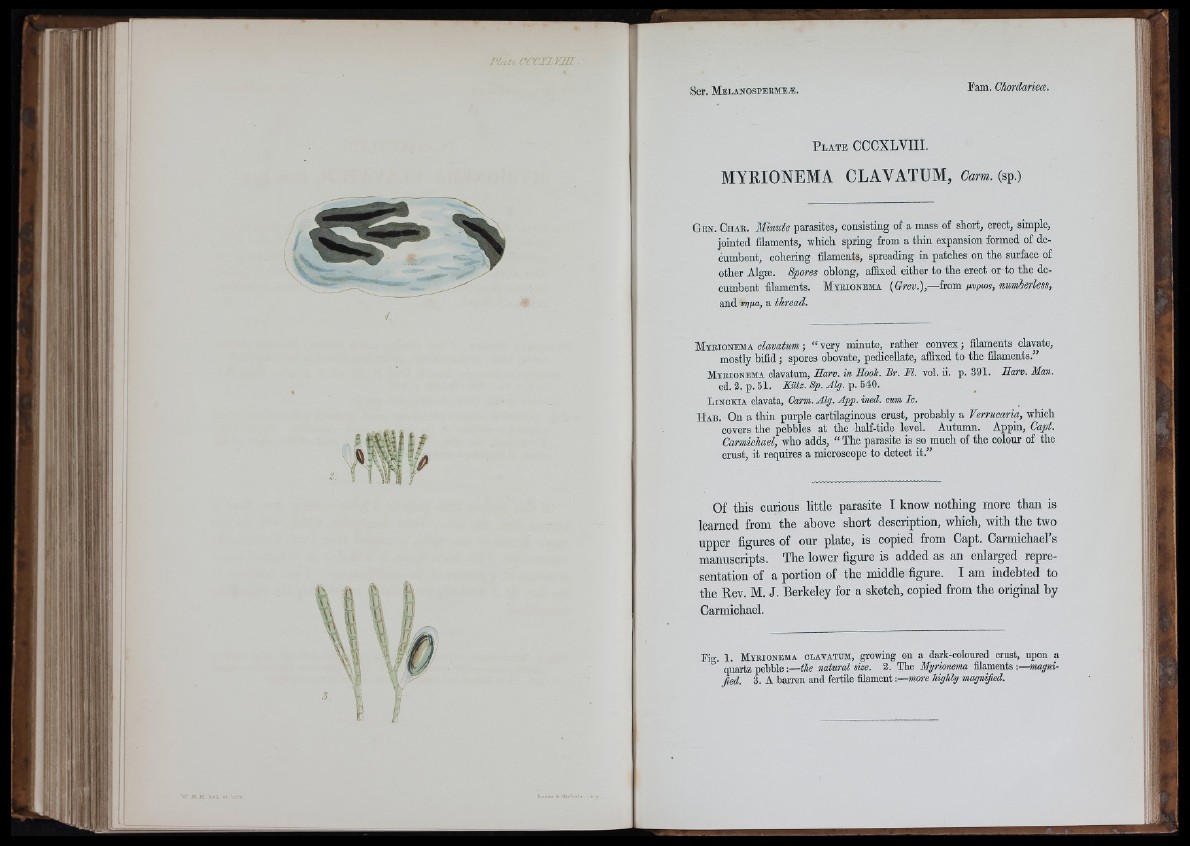
K
r,:|! i!
^ b
' Í Í
l i t -
' f
V f i ü f i
M 11 U T
T I \ ' ¥ . V II i
Àîi
P l a t e CCCXLVIII.
MYRIONEMA CLAVATUM, Carm. (sp.)
G e n . C h a r . Mirnife parasites, consisting of a mass of short, erect, simple,
jointed filaments, which spring from a tliin expansion formed of decumbent,
cohering filaments, spreading in patches on th e surface of
other Algæ. Spores oblong, affixed either to the erect or to th e decumbent
filaments. M y e io n em a [Q re v ),—from pvptos, numherless,
and rtjjjia, a thread.
M yrionema clavatum; “ very minute, rather convex; filaments clavate,
mostly b ifid ; spores obovate, pedicellate, affixed to the filaments.”
Myeionema clavatum, Sarv . in Hook. Br. M. vol. ii. p. 391. Harv. Man.
ed. 2. p. 61. Kütz. Sp. Alg. p. 540.
L inckia clavata, Carm. Alg. App. ined. mm, Ic.
H a b . On a th in purple cartilaginous crust, probably a Verrucaria, which
covers the pebbles a t the half-tide level. Autumn. Appin, Capt.
Carmichael, who adds, “ The parasite is so much of the colour of the
crust, it requires a microscope to detect it.”
Of this curious little parasite I know nothing more than is
learned from the above short description, which, with the two
upper figm-es of our plate, is copied from Capt. Carmichaers
manuscripts. The lower figure is added as an enlarged representation
of a portion of the middle figure. I am indebted to
the Rev. M. J. Berkeley for a sketch, copied from the original by
Carmichael.
Fig. 1. Myeionema clavatum, growing on a dark-coloured crust, upon a
’ quartz pebble -.— the natural size. 2. The Myrionema filaments ■.— magnijied.
3. A barren and fertile fflamcnt ■.—more highly magnijied.
f flüJ f